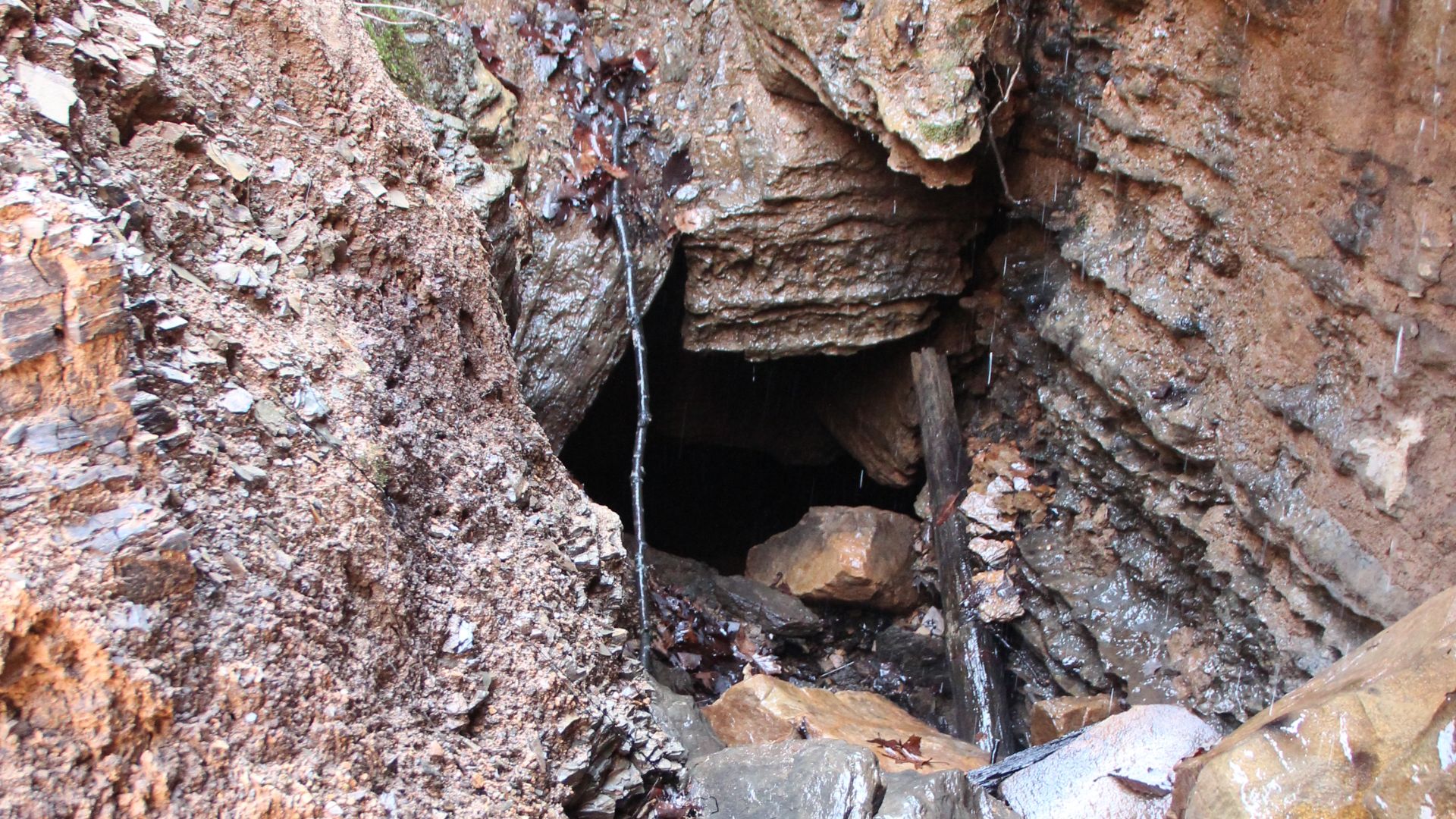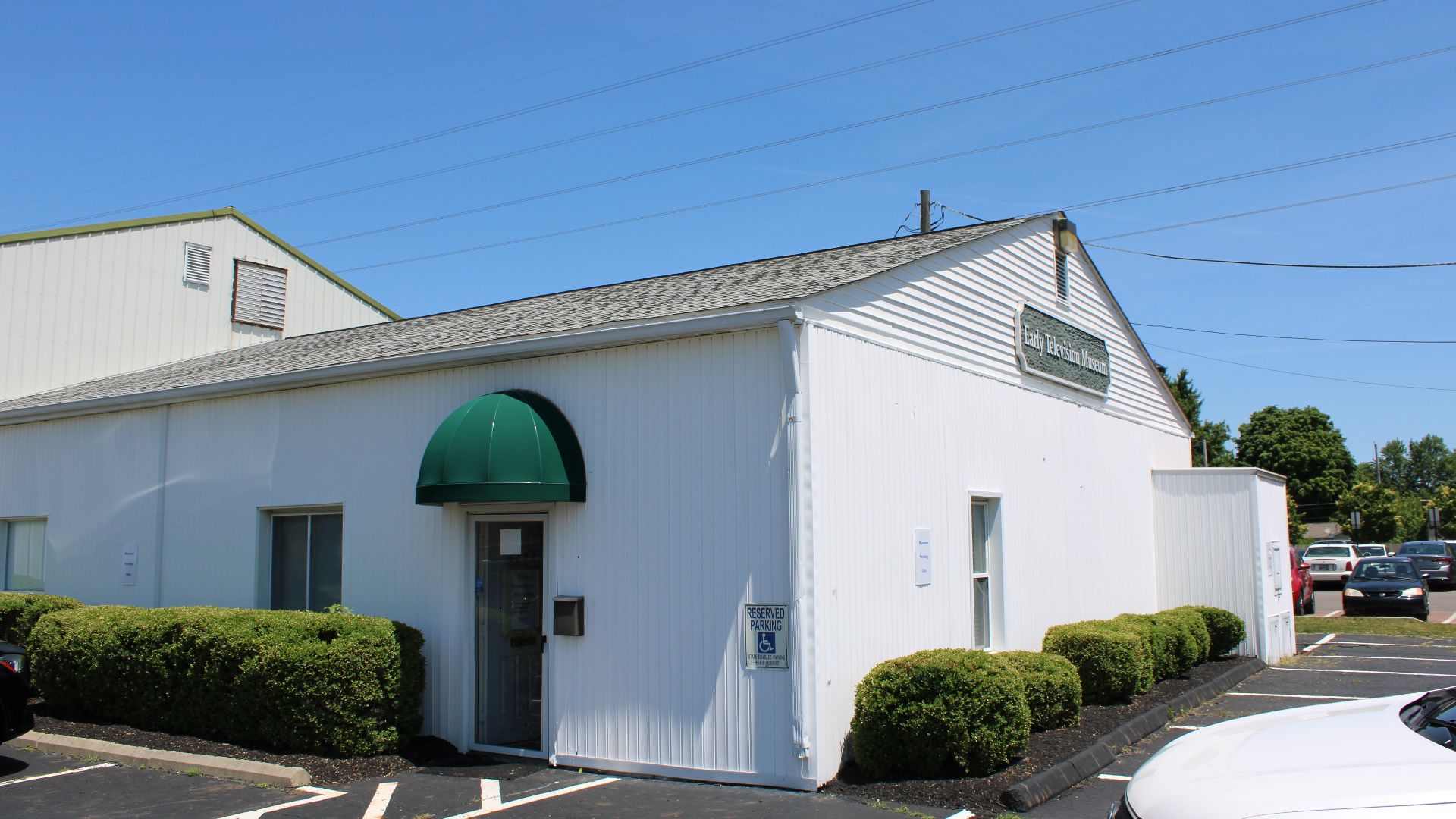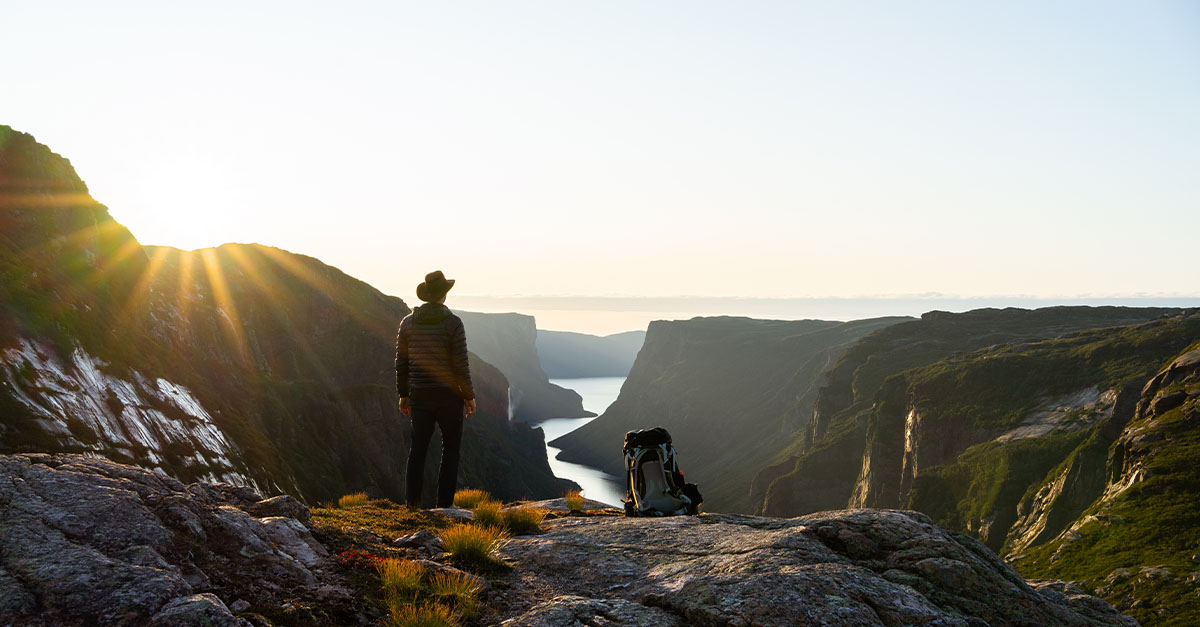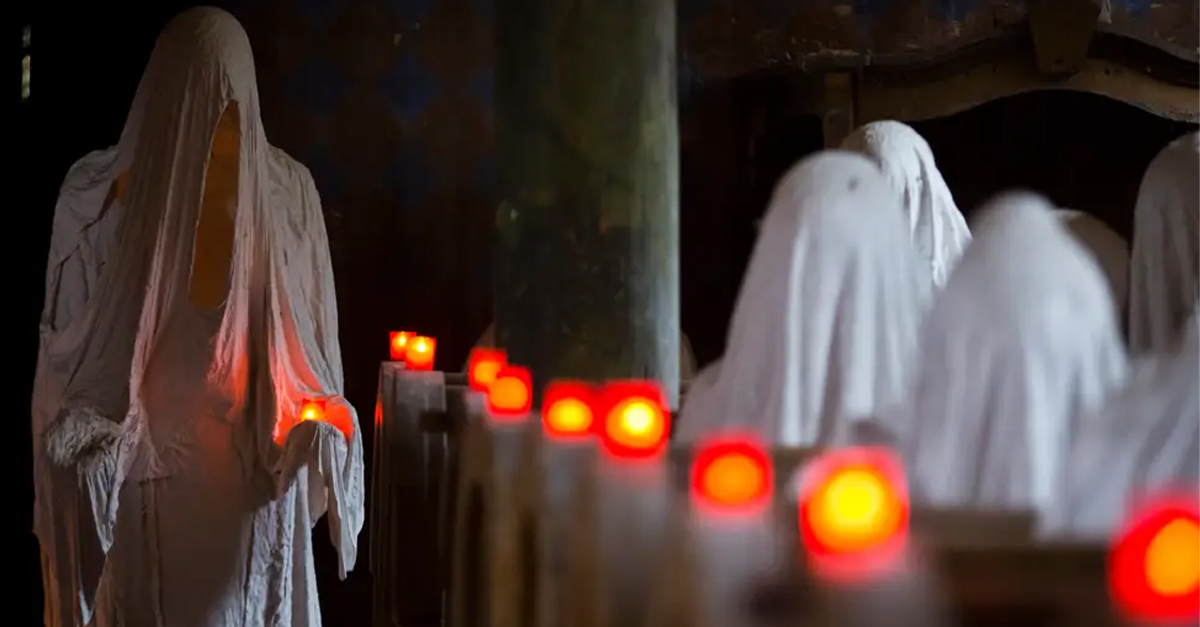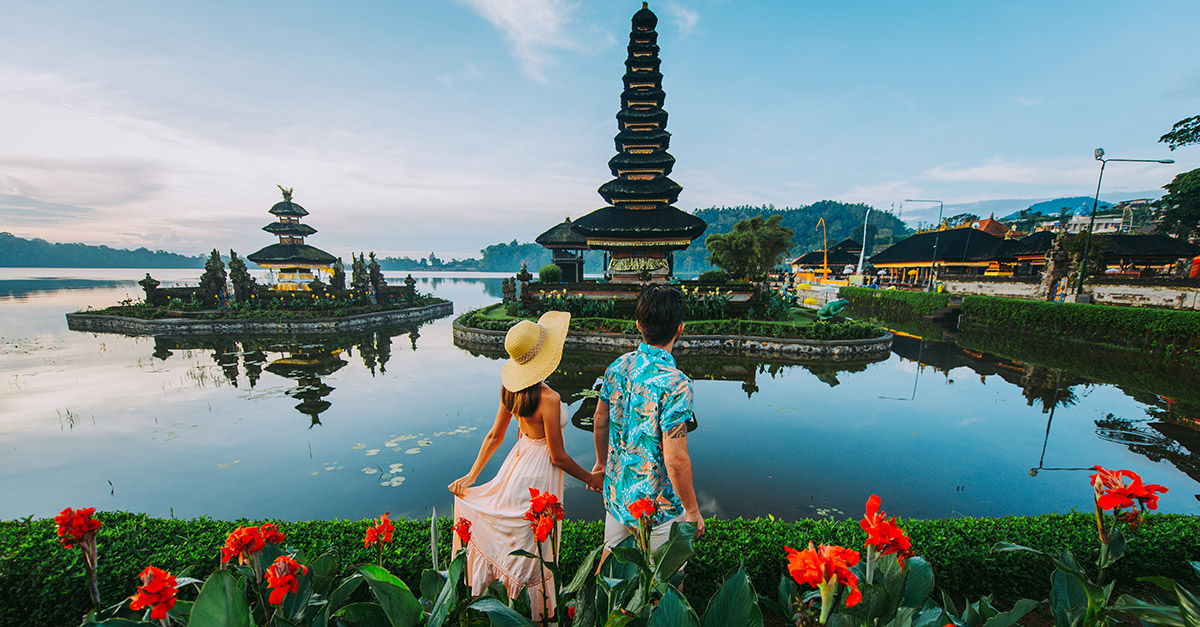Beyond Tourist Traps
Hidden throughout America are destinations that locals guard like secrets—underground catacombs, glowing fireflies, and ancient stone mysteries nobody can fully explain. These are the spots worth adding to your travel list.

Alabama: Neversink Pit
Picture standing at the edge of a 162-foot vertical cave where sunlight pierces through the opening like a natural spotlight, illuminating walls draped in blooming ferns and wildflowers each spring. Neversink Pit in Jackson County isn't your average roadside attraction—it's a massive open-air geological marvel.
Alabama: Neversink Pit (Cont.)
What makes this pit especially remarkable is its role as a critical ecological sanctuary. Several bat species have made these limestone walls their home, making the site not just visually spectacular but environmentally significant. The spring bloom converts the entire cavern into a living tapestry of greenery.
Alaska: The Upside-Down Forest Of Glacier Gardens
The story behind Glacier Gardens' most famous feature reads like creative problem-solving at its finest. After a devastating 1984 landslide uprooted dozens of trees, owner Steve Bowhay saw opportunity where others saw disaster—he flipped the trees upside down.
 Wendy Cutler from Vancouver, Canada, Wikimedia Commons
Wendy Cutler from Vancouver, Canada, Wikimedia Commons
Alaska: The Upside-Down Forest Of Glacier Gardens (Cont.)
This act converted their massive root systems into extraordinary planters bursting with vibrant flowers. The 50-acre botanical wonderland in Juneau now showcases what happens when human ingenuity meets natural catastrophe. It is set within the vast Tongass National Forest.
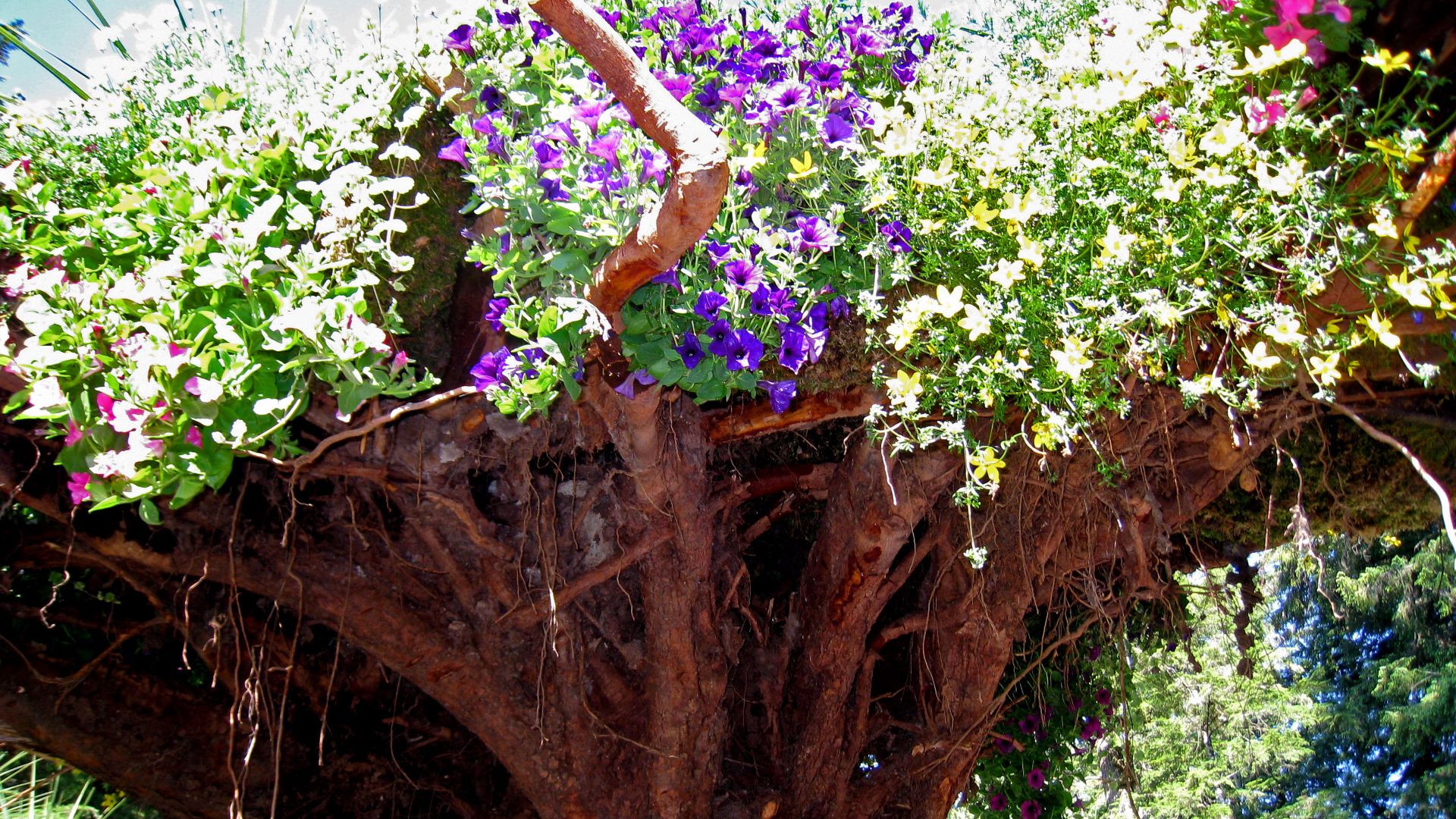 Wendy Cutler from Vancouver, Canada, Wikimedia Commons
Wendy Cutler from Vancouver, Canada, Wikimedia Commons
Arizona: Pumpkin Spring Pool
Don't let the inviting orange glow fool you—Pumpkin Spring Pool is as deadly as it is beautiful. This mineral-rich hot spring along the Colorado River features a distinctive bright orange travertine formation that genuinely resembles a giant pumpkin.
 Nate Loper from Flagstaff, USA, Wikimedia Commons
Nate Loper from Flagstaff, USA, Wikimedia Commons
Arizona: Pumpkin Spring Pool (Cont.)
The vibrant color comes from the same minerals that make the water dangerously toxic, with arsenic concentrations high enough to be lethal. Reaching this hidden Grand Canyon wonder requires commitment—you'll need to raft down the Colorado River to access it.
 Nate Loper from Flagstaff, AZ, USA, Wikimedia Commons
Nate Loper from Flagstaff, AZ, USA, Wikimedia Commons
California: Institute Of Illegal Images
Hidden within a private San Francisco home lies one of the world's most comprehensive collections of psychedelic art. Collector Mark McCloud has amassed this private archive celebrating counterculture history, where tiny squares of paper feature everything from famous pop culture icons to intricate original artwork.
 San Francisco Chronicle/Hearst Newspapers, Getty images
San Francisco Chronicle/Hearst Newspapers, Getty images
Connecticut: Gungywamp
The stone chambers scattered throughout this Groton archaeological site have puzzled historians and archaeologists for decades, containing artifacts that span both Native American and colonial periods. What makes Gungywamp truly fascinating is the ongoing debate about its original purpose.
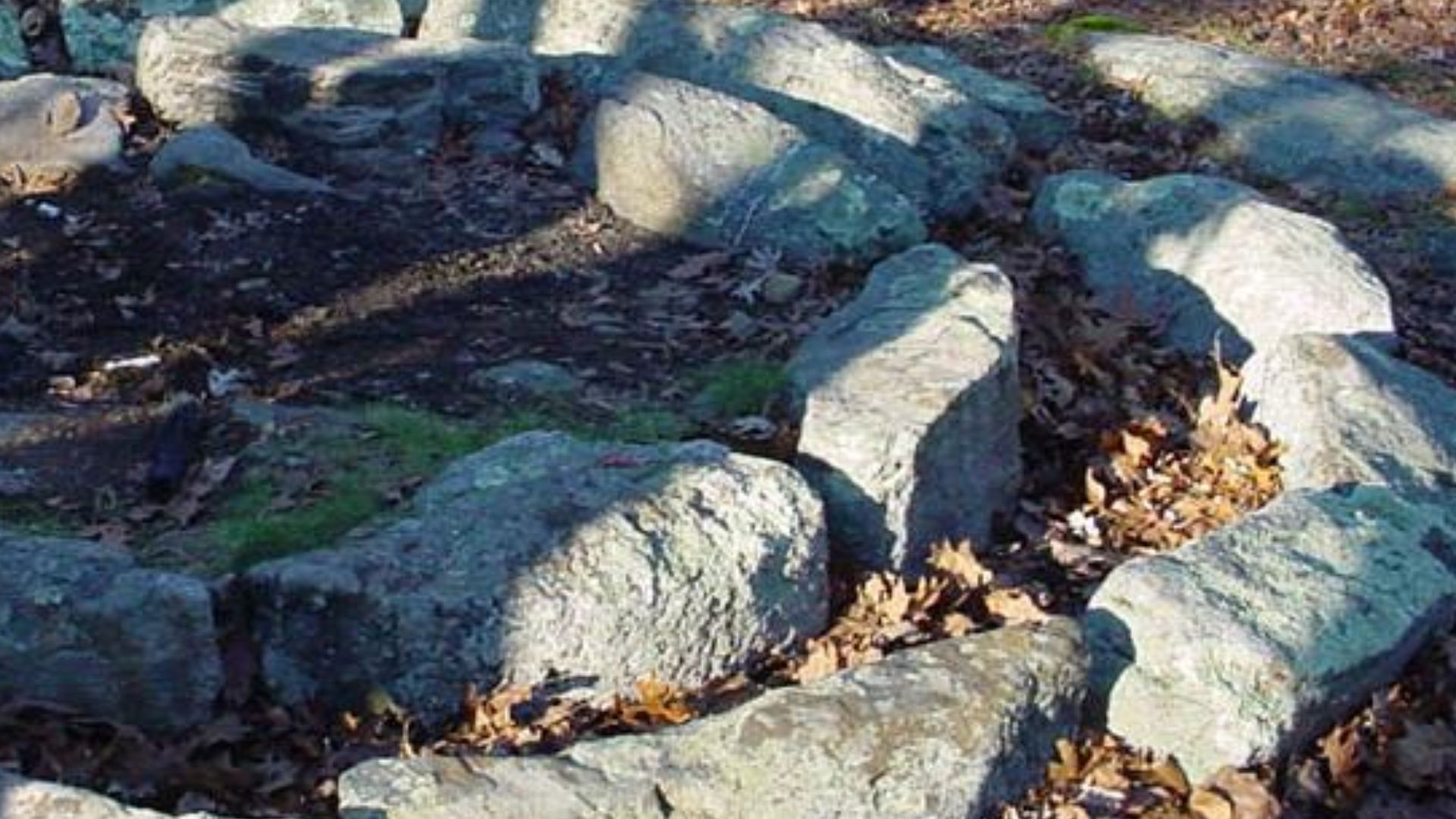 Randal J. (en:User:RJFerret), Wikimedia Commons
Randal J. (en:User:RJFerret), Wikimedia Commons
Delaware: Marian Coffin Gardens
Pioneering female landscape architect Marian Cruger Coffin transformed the grounds at Gibraltar in 1932, creating an innovative masterpiece of early 20th-century horticultural design that many people are unaware of. Her distinctive approach featured carefully planned garden rooms and Italianate terraces with elegant fountains.
Florida: Neptune Memorial Reef
Three miles off the coast of Key Biscayne lies an underwater city designed to resemble Atlantis, except that this one serves as both a final resting place for the deceased and a thriving artificial reef that supports marine ecosystems.
 Todd Murray from Bloomington, MN, USA, Wikimedia Commons
Todd Murray from Bloomington, MN, USA, Wikimedia Commons
Florida: Neptune Memorial Reef (Cont.)
Neptune Memorial Reef takes cremated remains and mixes them with cement to create memorial plaques and sculptures that become permanent fixtures in this submerged necropolis, offering an alternative to traditional burial that actually benefits ocean life. The concept is simultaneously morbid and beautiful.
 AbhiSuryawanshi, Wikimedia Commons
AbhiSuryawanshi, Wikimedia Commons
Georgia: Fantastic Pit (Ellison's Cave)
Deep within Walker County's Ellison's Cave lies another highly terrifying natural feature in the eastern United States. This is a vertical shaft that drops 586 feet straight down into absolute darkness. It requires advanced vertical caving skills and specialized equipment.
Georgia: Fantastic Pit (Ellison's Cave) (Cont.)
The sheer scale of the drop creates an almost incomprehensible sense of space and danger. Standing at the edge and watching your light disappear into the void below gives you a visceral understanding of just how deep 586 feet really is.
Hawaii: Lithified Sand Dunes (Mahaulepu Beach)
Ancient sand dunes at Mahaulepu Beach on Kauai have undergone a fantastic change over thousands of years, slowly turning to stone through natural geological processes that create otherworldly formations along the coastline. These lithified dunes offer a rare opportunity to see geology in action.
Indiana: Market Street Catacombs
Beneath the bustling streets of Indianapolis lies a forgotten network of brick and limestone tunnels stretching over 20,000 square feet. It was a subterranean world built in the late 19th century to revolutionize the operation of the city's market district.
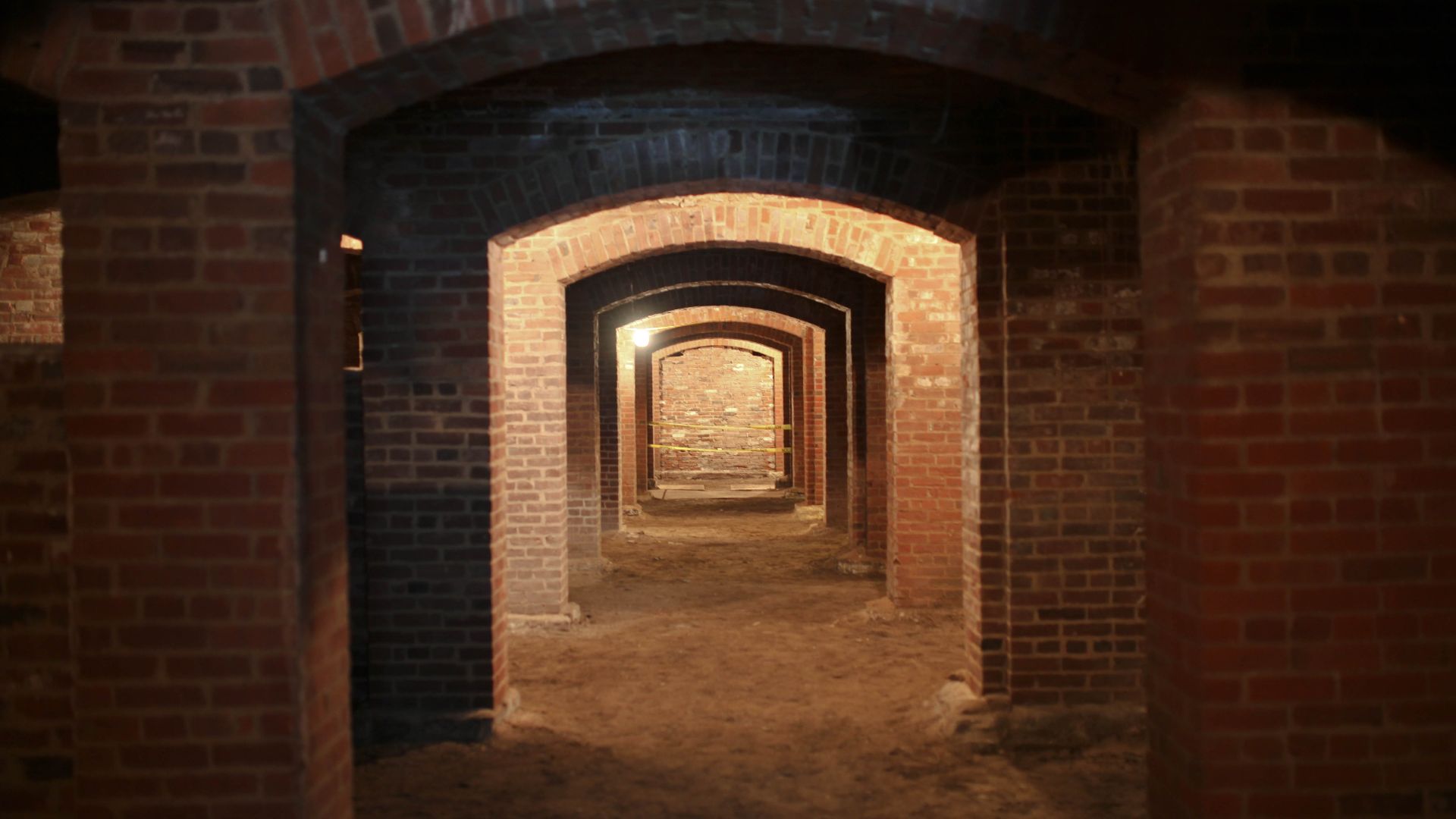 Valerie Keinsley, Indiana Humanities, Wikimedia Commons
Valerie Keinsley, Indiana Humanities, Wikimedia Commons
Kentucky: Broke Leg Falls
Hidden within the rugged wilderness of Daniel Boone National Forest, Broke Leg Falls cascades dramatically through a secluded gorge that requires moderate hiking skills to access. The waterfall's tranquil setting and dramatic drop make it a rewarding destination for those willing to venture off the beaten path.
Kentucky: Broke Leg Falls (Cont.)
The area carries scars from a devastating 2012 tornado that tore through the forest, yet nature's amazing resilience shines through in the restoration that has occurred since. The trail to the falls winds through regenerated forest, where new growth mingles with storm-damaged remnants.
Maine: Boon Island Light
Six miles off the coast of York stands Maine's tallest lighthouse at 133 feet, situated on a remote rocky island that has witnessed some of the state's most harrowing maritime disasters. Boon Island Light guards one of the most treacherous stretches of the Atlantic coast.
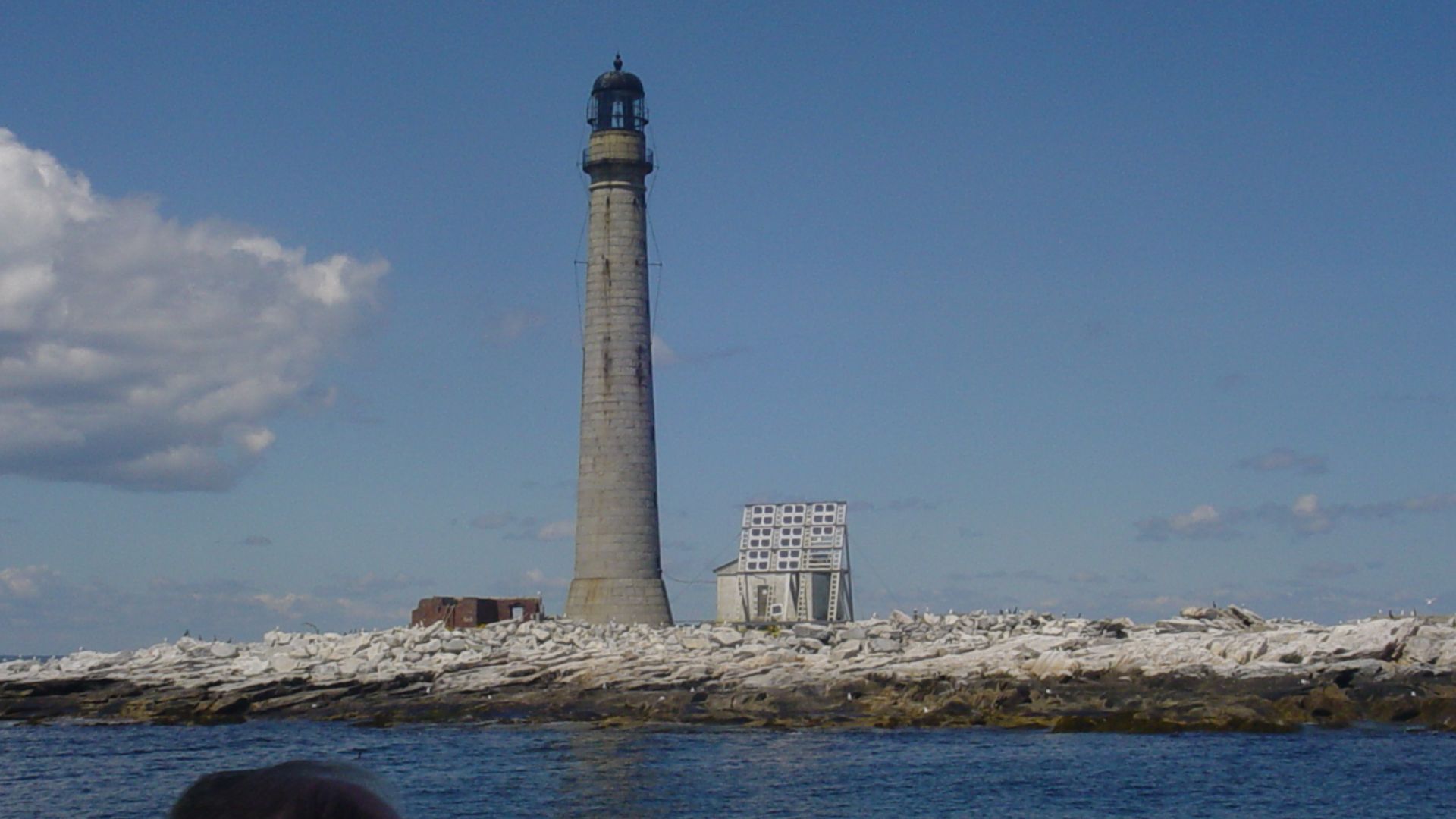 Originally uploaded by Dk69, Wikimedia Commons
Originally uploaded by Dk69, Wikimedia Commons
Maine: Boon Island Light (Cont.)
Here, countless ships have met their end on the unforgiving rocks, and its isolation is so complete that the island is accessible only by boat through often-challenging waters. The island's history reads like a collection of survival horror stories—shipwrecks that left survivors stranded on barren rock.
 U.S. Coast Guard, Wikimedia Commons
U.S. Coast Guard, Wikimedia Commons
Missouri: Welch Spring Hospital Ruins
Along the banks of the Current River sits the haunting remnant of a 1913 sanatorium, now a picturesque ruin that nature is slowly reclaiming, one vine and tree root at a time. Welch Spring Hospital once offered hope to those suffering from tuberculosis and other ailments.
Montana: Medicine Rocks State Park
At Medicine Rocks State Park, wind and water have spent millennia sculpting sandstone into striking formations that seem to defy natural explanation. Native American tribes considered this site sacred long before it became a state park, recognizing something spiritually significant in these otherworldly rock pillars.
 Tim Evanson, Wikimedia Commons
Tim Evanson, Wikimedia Commons
Montana: Medicine Rocks State Park (Cont.)
The park's name reflects this deep cultural reverence, acknowledging the "medicine" or spiritual power that indigenous peoples felt emanating from these geological wonders. Apparently, the erosion patterns have created a surreal view perfect for both hiking and photography.
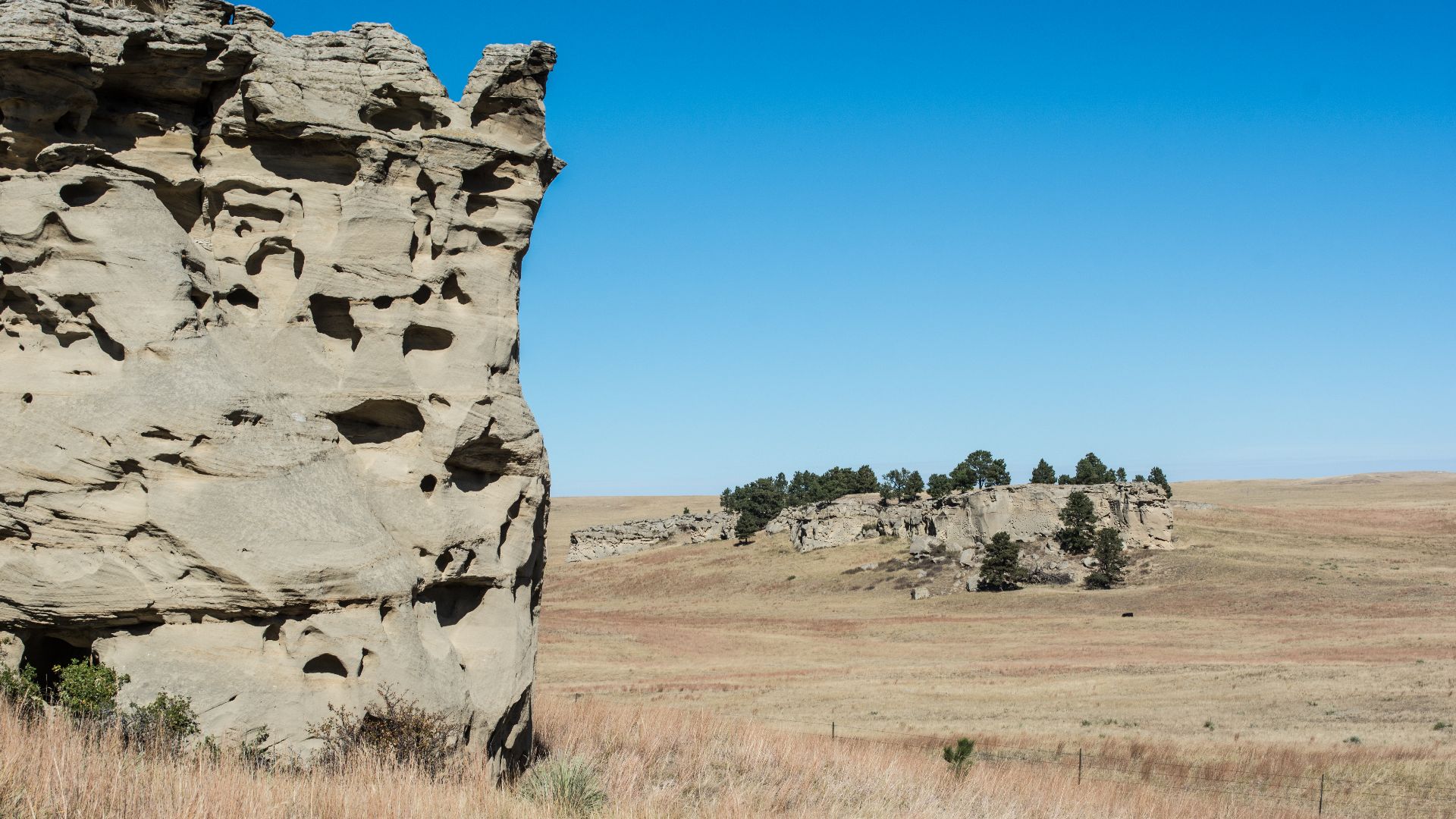 Tim Evanson, Wikimedia Commons
Tim Evanson, Wikimedia Commons
Nebraska: Toadstool Geologic Park
This is where unusual rock formations resemble giant mushrooms sprouting from barren earth. Toadstool Geologic Park's alien terrain has earned comparisons to the moon's surface, with its stark beauty and geological oddities creating an environment that feels transported from another planet entirely.
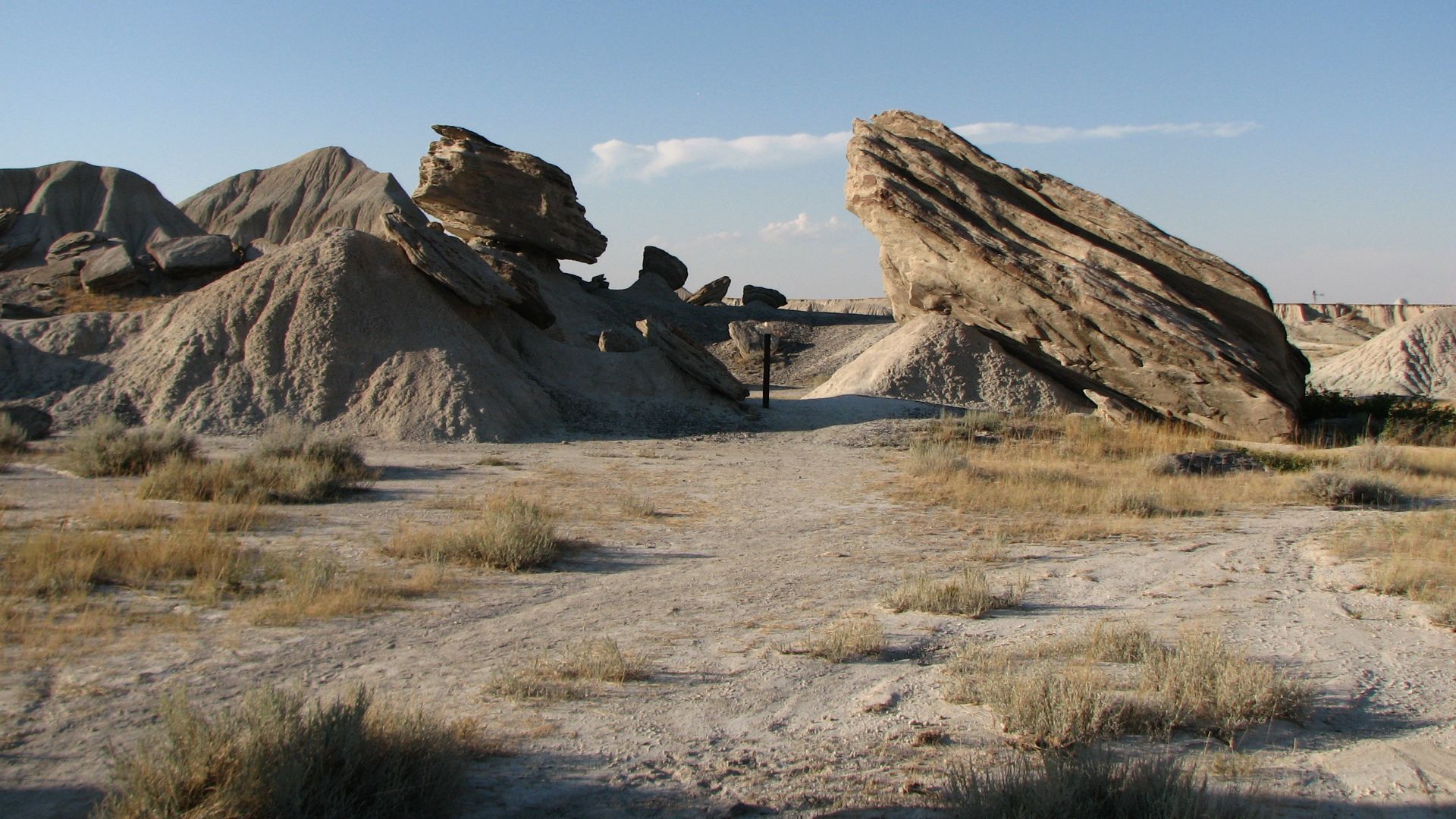 Kahvc7 at English Wikipedia, Wikimedia Commons
Kahvc7 at English Wikipedia, Wikimedia Commons
Nebraska: Toadstool Geologic Park (Cont.)
The park's distinctive hoodoos—tall, thin spires of rock with wider caps—were formed through differential erosion, where more complex rock protected softer layers beneath. Beyond the strange rock formations, you’ll get to see fossilized animal tracks scattered throughout the area.
 Brian Kell (Bkell), Wikimedia Commons
Brian Kell (Bkell), Wikimedia Commons
Nevada: Atomic Survival Town
In the Nevada National Security Site, a ghost town deliberately built to be destroyed, was constructed during the Cold War specifically to study how nuclear blasts affect civilian infrastructure. Atomic Survival Town was populated with mannequins positioned in everyday scenarios.
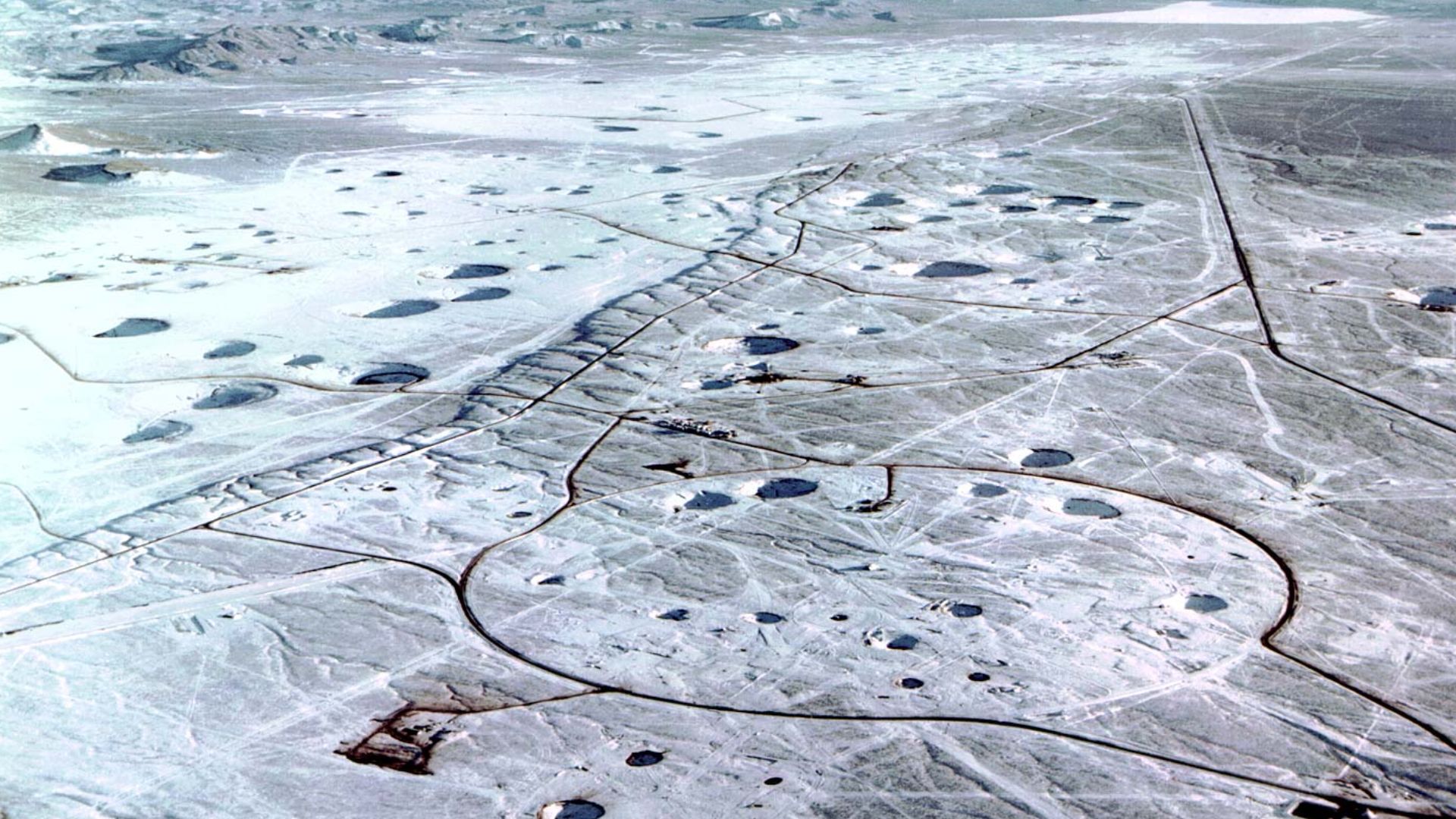 Federal Government of the United States, Wikimedia Commons
Federal Government of the United States, Wikimedia Commons
New Hampshire: Sculptured Rocks
The Cockermouth River has spent thousands of years working like a master sculptor, carving smooth, intricate shapes into the bedrock at this natural gorge in Groton. Sculptured Rocks Natural Area showcases water's patient artistry, where constant flow has worn the stone into curves.
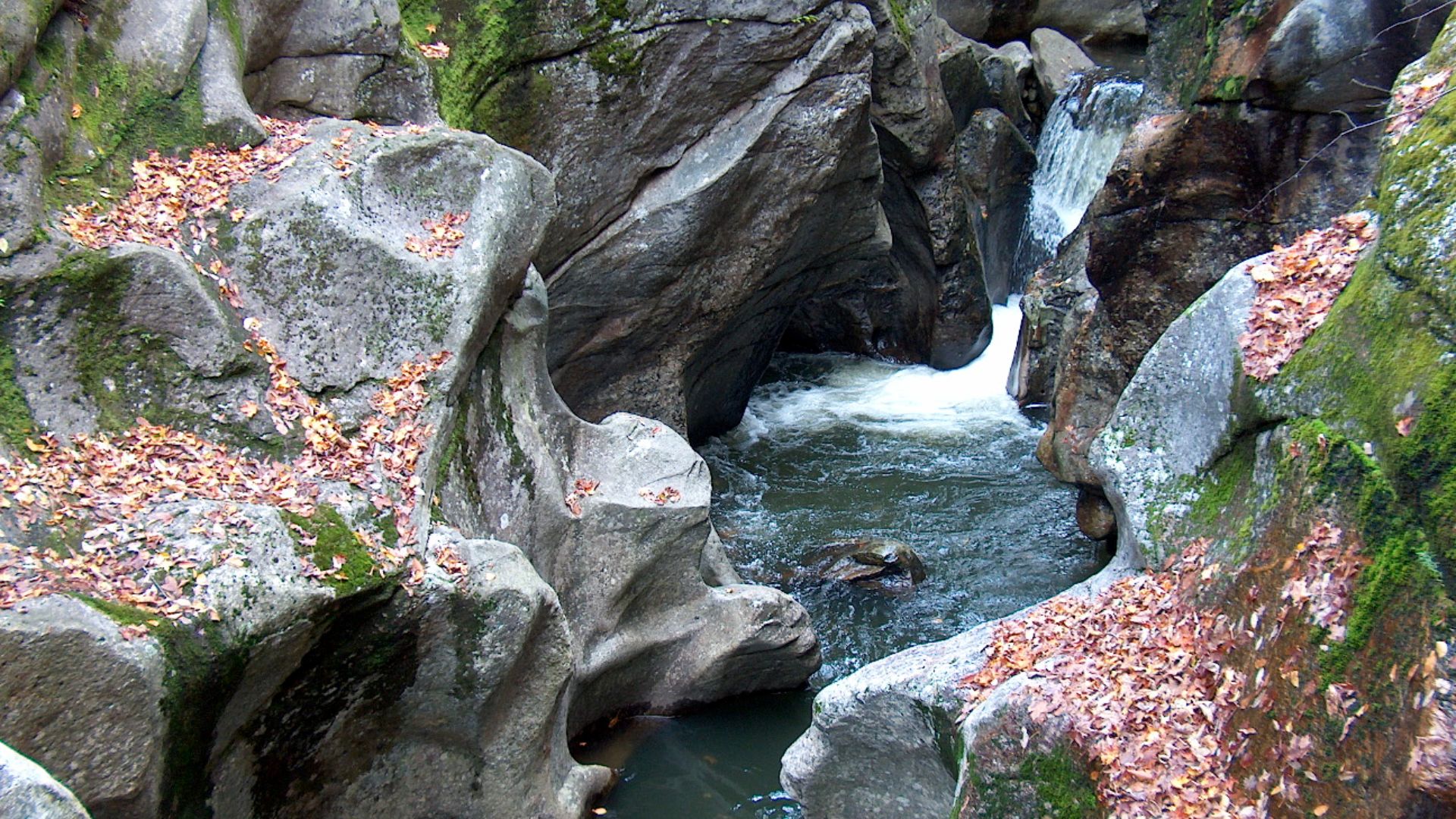 Ken Gallager at en.wikipedia, Wikimedia Commons
Ken Gallager at en.wikipedia, Wikimedia Commons
New Hampshire: Sculptured Rocks (Cont.)
The result is a natural playground where geology becomes tactile art, inviting visitors to run their fingers over surfaces shaped by millennia of erosion. During summer months, the site turns from a geological wonder to a recreation hotspot, with locals flocking to the smooth rocks for swimming.
 User:Magicpiano, Wikimedia Commons
User:Magicpiano, Wikimedia Commons
New Mexico: Ah-Shi-Sle-Pah Wilderness Study Area
Northwestern New Mexico's remote wilderness conceals one of the Southwest's most spectacular displays of badlands and hoodoo formations, where colorful rock layers tell stories of ancient environments millions of years old. Ah-Shi-Sle-Pah Wilderness Study Area remains remarkably unknown despite featuring striking geological formations.
 Bob Wick; Bureau of Land Management, Wikimedia Commons
Bob Wick; Bureau of Land Management, Wikimedia Commons
New Mexico: Ah-Shi-Sle-Pah Wilderness Study Area (Cont.)
The area is rich with dinosaur fossils embedded in the exposed rock layers, making it a destination where you're walking through both stunning scenery and deep prehistory simultaneously. The colorful badlands shift through shades of red, orange, gray, and purple depending on the light.
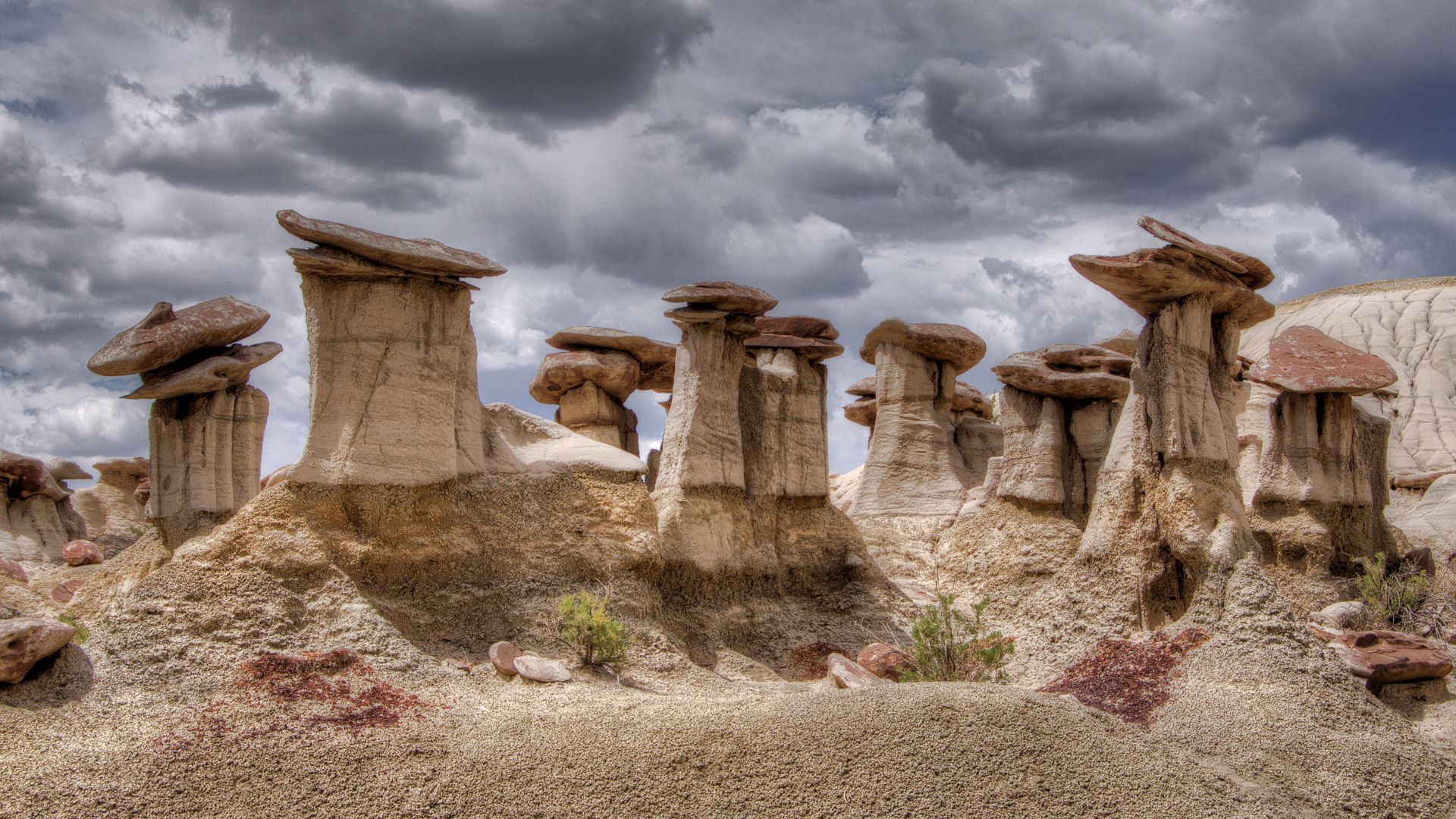 John Fowler from Placitas, NM, USA, Wikimedia Commons
John Fowler from Placitas, NM, USA, Wikimedia Commons
New York: North Brother Island
North Brother Island once housed Riverside Hospital, a facility dedicated to treating infectious diseases during an era when isolation was the only defense against deadly contagions. The island's most famous—or infamous—resident was Mary Mallon, better known as “Typhoid Mary”.
New York: North Brother Island (Cont.)
Today, the island serves as a bird sanctuary and remains strictly off-limits to the public, making it one of New York City's most forbidden destinations. The abandoned hospital buildings stand as haunting monuments to early 20th-century public health measures, their empty windows and collapsing walls visible from certain vantage points.
North Carolina: Blue Ghost Fireflies
Each late spring and early summer, the mountains of western North Carolina host a natural light show that seems pulled from fairy tales—bioluminescent insects known as Blue Ghost Fireflies emerge to create an ethereal blue glow among the forest floor.
 Evan M. Raskin, Wikimedia Commons
Evan M. Raskin, Wikimedia Commons
North Carolina: Blue Ghost Fireflies (Cont.)
Unlike typical fireflies that flash intermittently, these insects emit a continuous blue-green glow as they drift through the darkness. The scientific name Phausis reticulata doesn't capture the magic of watching these creatures turn a dark forest into something otherworldly.
 Aggyrolemnoixytes, Wikimedia Commons
Aggyrolemnoixytes, Wikimedia Commons
North Dakota: The Pyramid Of North Dakota
This massive concrete pyramid looks like it belongs in Egypt rather than the American Midwest—except this structure was built in the 1970s as part of a Cold War missile defense system. The Stanley R Mickelsen Safeguard Complex features this striking geometric structure.
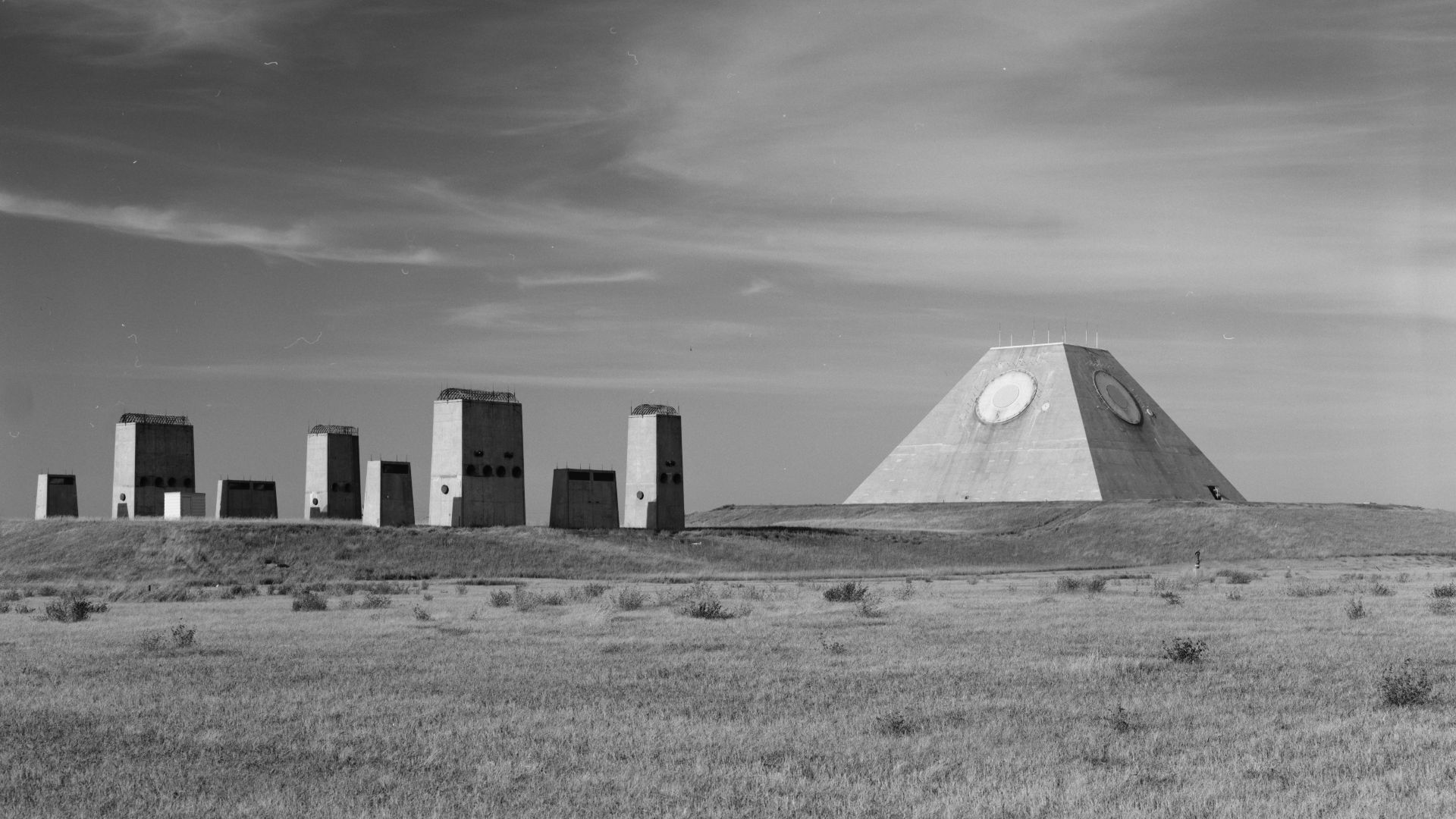 possibly Benjamin Halpern, Wikimedia Commons
possibly Benjamin Halpern, Wikimedia Commons
North Dakota: The Pyramid Of North Dakota (Cont.)
It was designed to house radar equipment for detecting incoming nuclear missiles. The site's operational history is absurdly brief. After spending years and vast sums of money on construction, the complex remained active for less than a year before being decommissioned as obsolete.
Ohio: Early Television Museum
Hilliard, Ohio, is home to one of the world's largest collections of early television sets, showcasing the evolution of technology that would fundamentally change human communication and entertainment. The Early Television Museum takes visitors on a nostalgic journey from mechanical TVs of the 1920s through the color sets of the 1950s.
Ohio: Early Television Museum (Cont.)
The collection documents a technological revolution that happened within a single human lifetime. Mechanical televisions with spinning disks, early electronic models with tiny screens, and the first color sets all tell the story of rapid innovation driven by both engineering brilliance and commercial competition.
Pennsylvania: Devil's Hole Ruins
Devil's Hole Ruins are believed to be the remains of an old homestead or mill, though little documented history exists to definitively explain who built these structures or when they were abandoned. The stone foundations accessible via hiking trails have sparked numerous theories and local folklore.
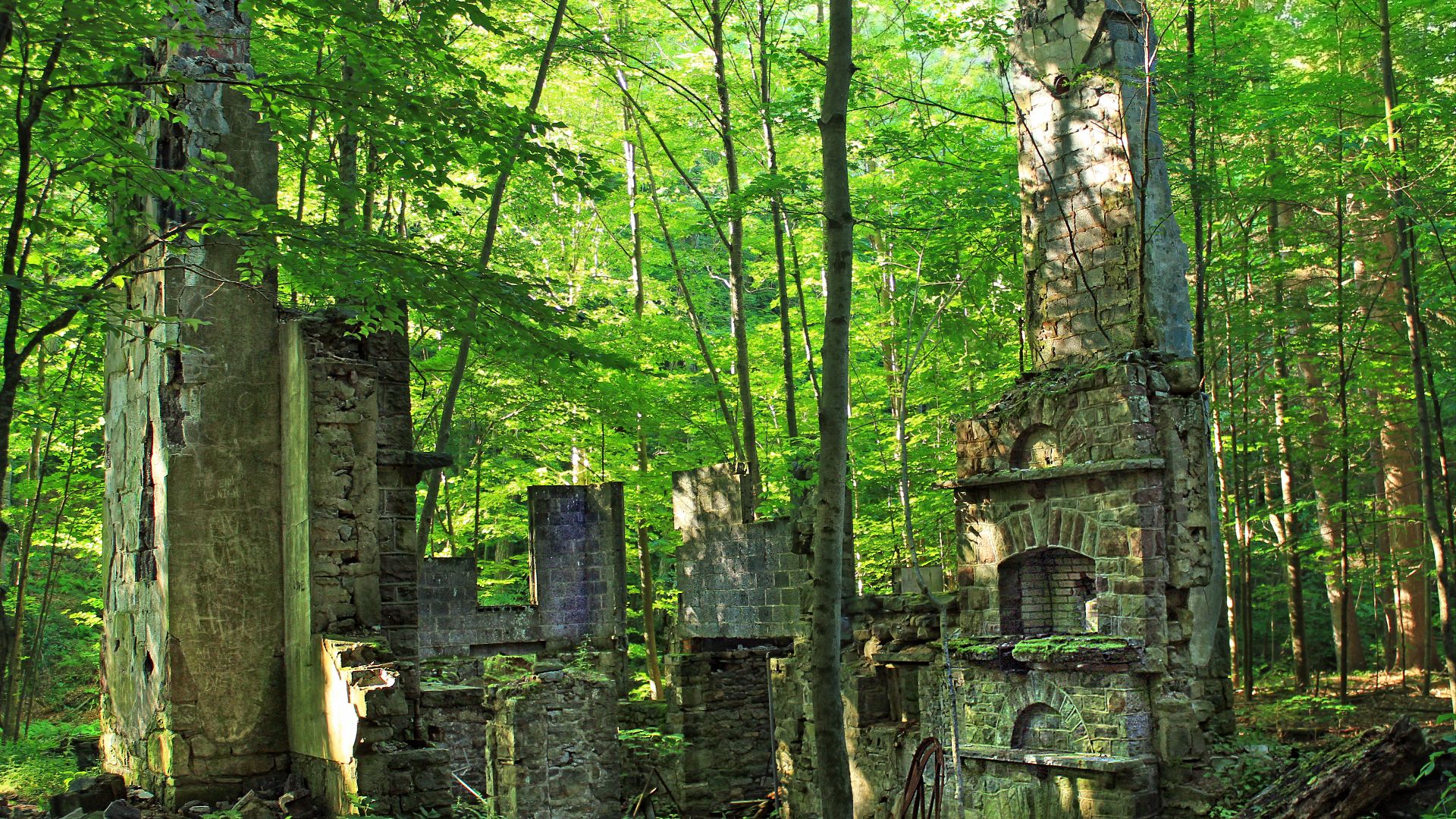 Nicholas A. Tonelli from Northeast Pennsylvania, USA, Wikimedia Commons
Nicholas A. Tonelli from Northeast Pennsylvania, USA, Wikimedia Commons
Rhode Island: Neutaconkanut Hill Park
Neutaconkanut Hill Park is an 88-acre urban wilderness park located in Providence, Rhode Island, and is the city's highest natural point at 296 feet above sea level. The park has wooded trails, a rich local history, and recreational facilities, making it a unique green space within the city.
 Kenneth C. Zirkel, Wikimedia Commons
Kenneth C. Zirkel, Wikimedia Commons
Rhode Island: Neutaconkanut Hill Park (Cont.)
It is managed by the Neutaconkanut Hill Conservancy in partnership with the Providence Parks and Recreation Department. The park benefits from active volunteer stewardship and regular guided hikes. It was revitalized in the 2000s after a period of decline.
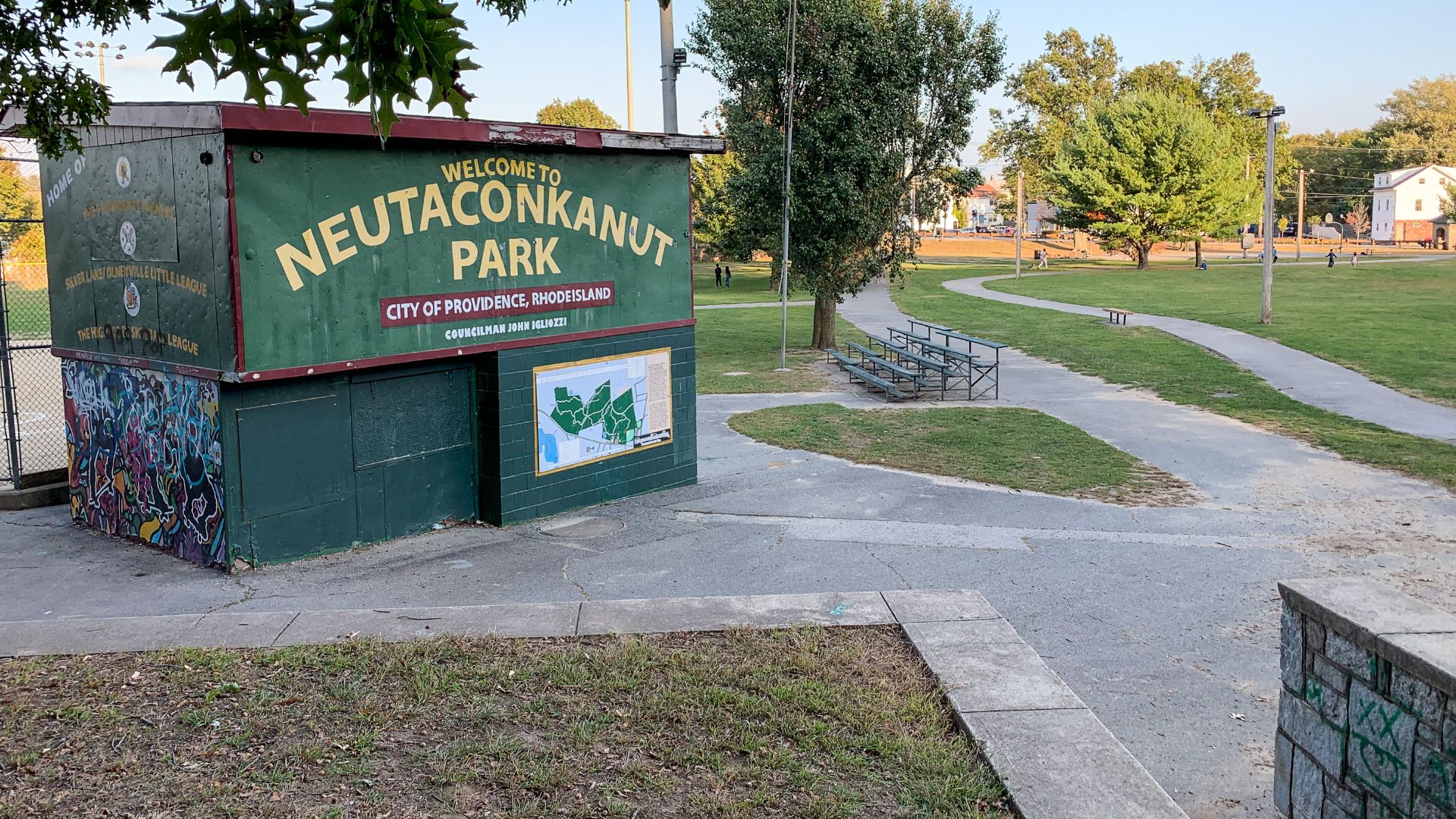 Kenneth C. Zirkel, Wikimedia Commons
Kenneth C. Zirkel, Wikimedia Commons
Utah: Fantasy Canyon
About 27 miles south of Vernal, Fantasy Canyon compresses millions of years of erosion into just 10 acres. Its wafer-thin fins, arches, and spires were sculpted from ancient sandstone shaped by wind and water. The result is a compact terrain that resembles a natural sculpture garden.
 Matthew Dillon from Hollywood, CA, USA, Wikimedia Commons
Matthew Dillon from Hollywood, CA, USA, Wikimedia Commons
Utah: Fantasy Canyon (Cont.)
A brief 0.6-mile trail weaves through formations that seem to balance against gravity, shifting in appearance as sunlight moves across their edges. Managed by the Bureau of Land Management, the canyon stays surprisingly quiet. Early explorer Earl Douglass dubbed it “The Devil’s Playground”.
 James St. John, Wikimedia Commons
James St. John, Wikimedia Commons
Wyoming: The Hole-In-The-Wall Outlaw Hideout
Here’s something intriguing. This hideout served as a base for gangs including Butch Cassidy’s Wild Bunch, the Sundance Kid, the Logan brothers, Jesse James, and others, who collectively became known as the Hole-in-the-Wall Gang.
Wyoming: The Hole-In-The-Wall Outlaw Hideout (Cont.)
At its peak, the camp featured several cabins, corrals, stables, and a communal set of rules against internal theft and disputes. The Hole-in-the-Wall area is now part of public land and a working ranch (Willow Creek Ranch), noted for its dramatic views, big skies, and scattered remains of outlaw cabins.
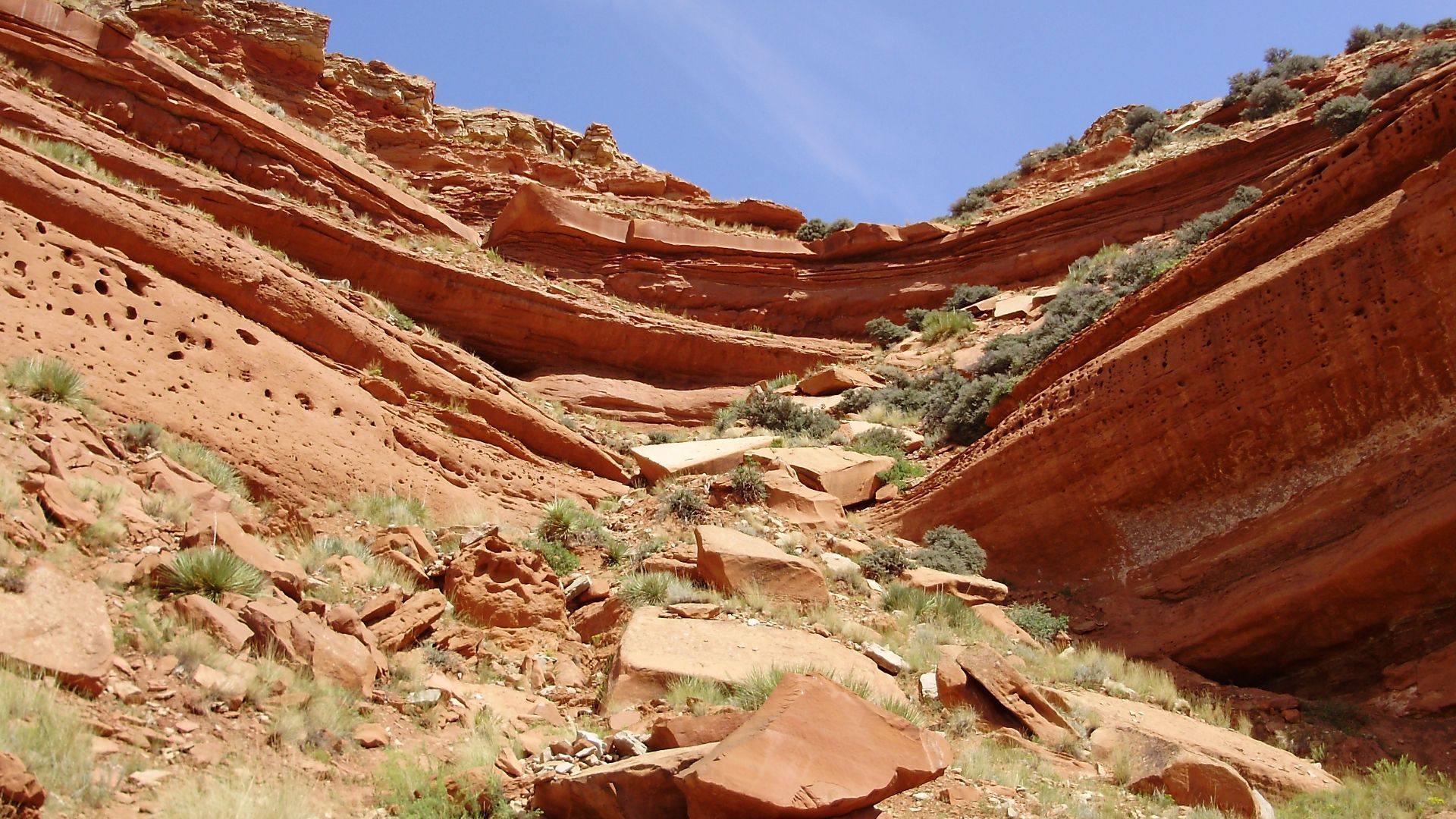 Bureau of Land Management, Wikimedia Commons
Bureau of Land Management, Wikimedia Commons





